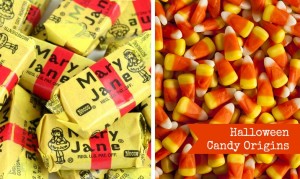How the stuff you steal out of your kid’s treat bag came to be.
Fun Size

Candy Corn
Candy maker George Renninger of the Wunderlee Candy Company in Philadelphia came up with the idea in the late 1880s to make candy that resembled corn kernels, only bigger and more brightly colored. The tri-colored candy bits were created by mixing sugar, water, and corn syrup in large kettles, with fondant and marshmallow added for smoothness. Then they poured the mixture into the molds, adding food dyes and only doing one color at a time. Appropriately enough, candy corn was at first a big hit with farmers. Today, the candy is made by machines: A tray of kernel molds are filled with cornstarch. Then the white section is added, then the orange, then the yellow. The only big difference in the recipe is that the sugar has been replaced with, ironically, high fructose corn syrup.
Mary Janes
These old-fashioned candies are basically taffy—really, really hard taffy made with molasses and little pieces of peanuts in them. This year, Mary Janes celebrate their 100th birthday. Charles N. Miller of the Charles N. Miller Candy Company came up with the idea (named after his aunt) when making candy with his father at home, in a house that was once owned by Paul Revere. Today, Mary Janes are made by the same company that makes Necco wafers in, ironically, the city of Revere, Massachusetts.







